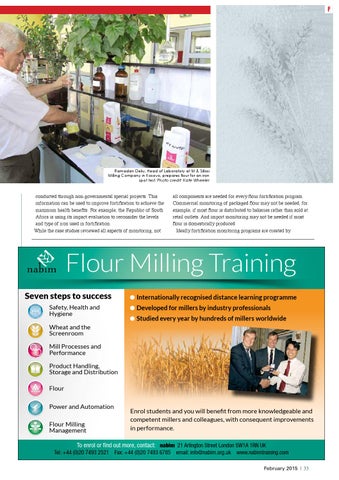F
Ramadan Deliu, Head of Laboratory at M & Sillosi Milling Company in Kosovo, prepares flour for an iron spot test. Photo credit: Kate Wheeler
conducted through non-governmental special projects. This information can be used to improve fortification to achieve the maximum health benefits. For example, the Republic of South Africa is using its impact evaluation to reconsider the levels and type of iron used in fortification. While the case studies reviewed all aspects of monitoring, not
all components are needed for every flour fortification program. Commercial monitoring of packaged flour may not be needed, for example, if most flour is distributed to bakeries rather than sold at retail outlets. And import monitoring may not be needed if most flour is domestically produced. Ideally fortification monitoring programs are created by
Flour Milling Training Seven steps to success Safety, Health and Hygiene
● Internationally recognised distance learning programme ● Developed for millers by industry professionals ● Studied every year by hundreds of millers worldwide
Wheat and the Screenroom Mill Processes and Performance Product Handling, Storage and Distribution Flour Power and Automation Flour Milling Management
Enrol students and you will benefit from more knowledgeable and competent millers and colleagues, with consequent improvements in performance.
To enrol or find out more, contact: nabim 21 Arlington Street London SW1A 1RN UK Tel: +44 (0)20 7493 2521 Fax: +44 (0)20 7493 6785 email: info@nabim.org.uk www.nabimtraining.com February 2015 | 33
